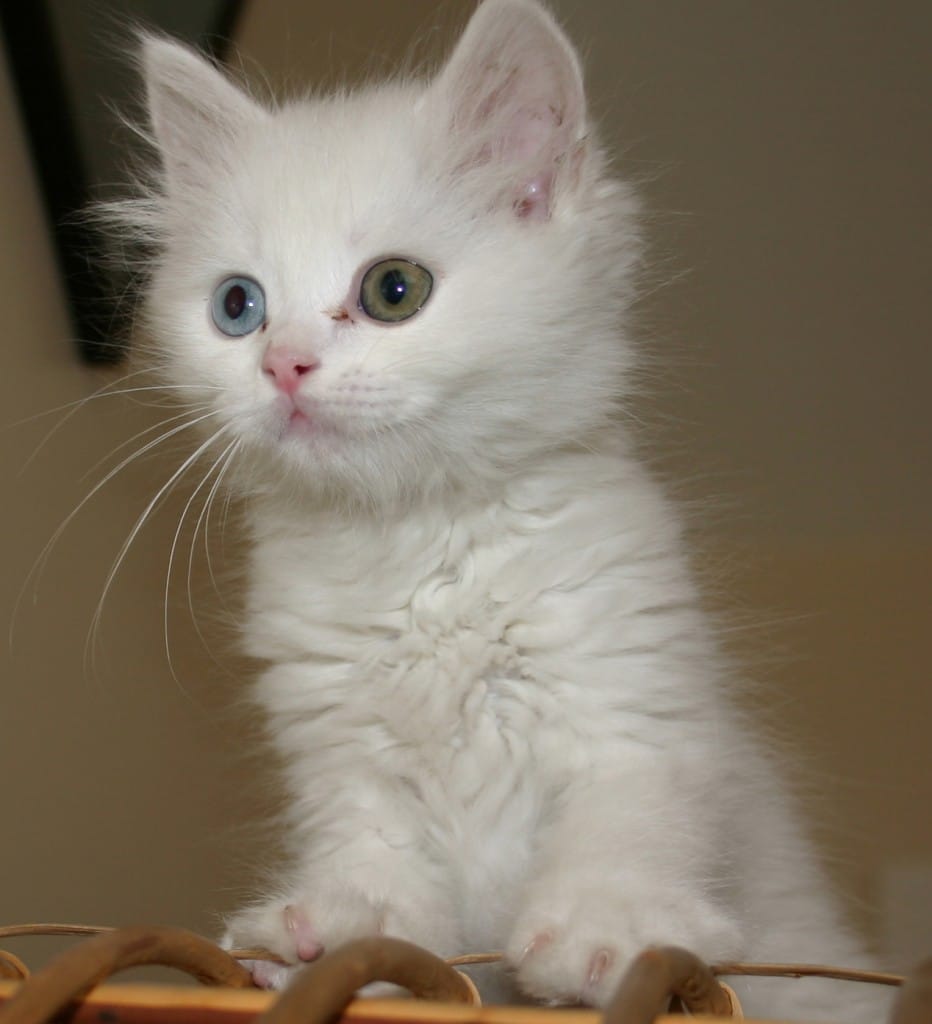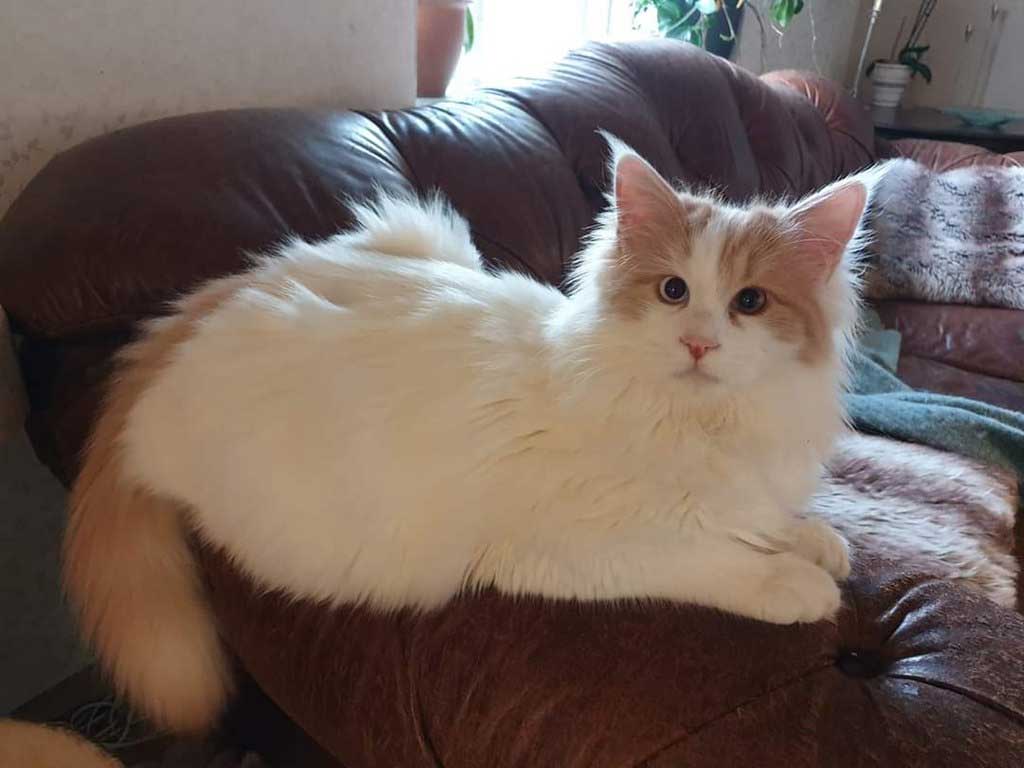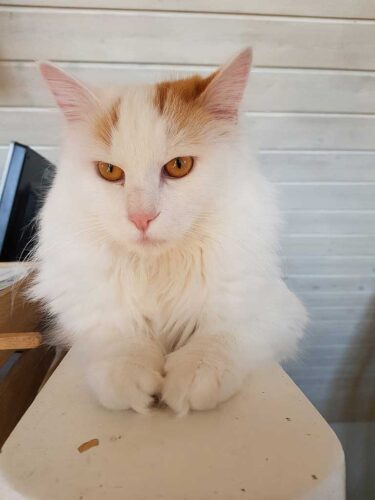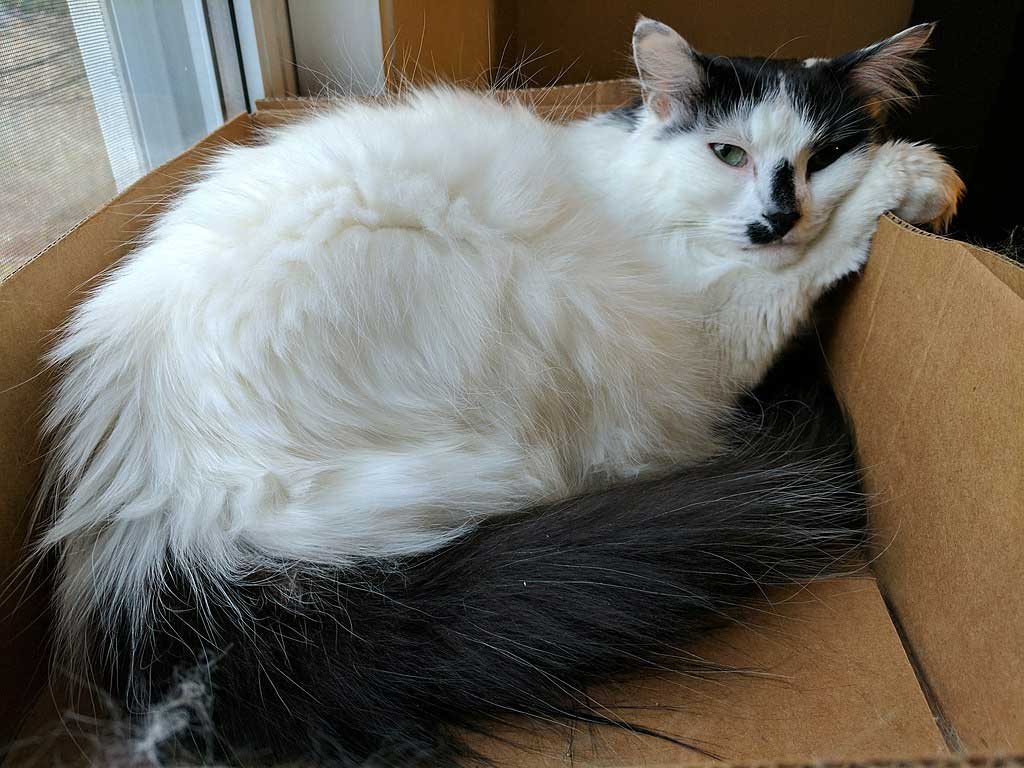
Content |
|---|
Characteristics "Turkish Van Cat"
Coexistence is important that you have with your new friend. Before considering the acquisition of a cat of the breed "Turkish Van Cat" you know certain factors. You must take into account their character, their need for exercise, their interaction with other pets, their care and if you have small children, their level of tolerance towards them.
Joy4.0 out of 5 stars (based on 1 review)
|
Activity level5.0 out of 5 stars (based on 1 review)
|
Friendliness to other pets4.0 out of 5 stars (based on 1 review)
|
|---|---|---|
Friendliness to children4.0 out of 5 stars (based on 1 review)
|
Grooming requirements3.0 out of 5 stars (based on 1 review)
|
Vocality4.0 out of 5 stars (based on 1 review)
|
Need for attention4.0 out of 5 stars (based on 1 review)
|
Affection towards its owners4.0 out of 5 stars (based on 1 review)
|
Docility2.0 out of 5 stars (based on 1 review)
|
Intelligence4.0 out of 5 stars (based on 1 review)
|
Independence2.0 out of 5 stars (based on 1 review)
|
Hardiness4.0 out of 5 stars (based on 1 review)
|
History
The turkish of lake van, sometimes called simply Turkish Van Cat, it is a very old natural race, original, as the name reflects, from the Lake Van region, in eastern turkey. It has been present for several centuries, as testified by the accounts of the merchants who brought their products from the East, and even for several millennia, as some engravings from almost 5.000 years. It also, gradually spread to surrounding areas: Armenia, Syria, Iraq, Iran and even the Russian Caucasus.
Whatever your age, its exact origins are subject to many legends.
One of them is that his tail got caught in a door of the Ark of Noah, what left a stain that remains to this day. Next, God reached out to calm the cat and, stroking him on the head, also left a color mark, adding the finishing touch to the breed's characteristic van pattern (white body, color head and tail). Islamic tradition considers that Allah stroked his back, leaving colored marks on their white fur, which are now sometimes called “Allah's footprint”.
After so much emotion, the little feline decided not to wait for the Ark to dock: jumped overboard and showed his swimming skills for the first time reaching the top of Mount Ararat, and then the shores of the lago van when the waters receded. Another possible - and more plausible explanation- of their love of swimming is that the region's scorching summer temperatures would have caused these cats to seek out the fresh water of the lake. The presence of numerous fish, an important food source in these difficult mountainous regions, is another likely reason for his attraction to water.
In any case, the Turkish van has remained isolated in its mountains for many centuries, without actually being domesticated by humans. Although it is probable that some knights brought specimens to Europe at the time of the Crusades (1095-1291), remained largely unknown in the Western world until the 1990s. 1950.
In 1955, Laura Lushington and Sonia Halliday, two British tourists visiting Turkey, they received as a gift two white kittens with a red tail and head. They took them back to England and began promoting the new breed. With the help of the breeder Lydia Russell, imported more cats, a difficult task not only because of the administrative procedures, but also because of the rarity of the breed even in its country of origin. But, managed to start a breeding program and proposed that the cat be recognized by feline associations.
They achieved their goal in 1960, with the recognition of the race by the Fédération Internationale Féline (FIFé). The breed was originally called Turkish cat, but the name was changed to Turkish van to avoid confusion with the Turkish Angora cat. The prestigious Governing Council of the Cat Fancy (GCCF), British reference body, recognized her in 1969.
The first Turkish van came to the United States in the decade of 1970, and the breed was included among those recognized by the International Cat Association (TICA) since its creation in 1979. But, was not up 1983 and the work of the breeders Barbara and Jack Reark that the breed really took off in North America. It was accepted by the Cat Fanciers’ Association (CFA) american in 1988 and received full recognition from the organization six years later, in 1994, which opened the door to feline exhibitions organized under his auspices.
Having said that, although it is recognized by most feline associations, the Turkish Van Cat It remains a rare breed, even in your country of origin, where they only registered 200 copies in 1992. It has been designated a national treasure and is the subject of a conservation program.
In the United States, the Turkish Van Cat is near the bottom of the cat breed classification based on the number of CFA registrations. In Great Britain, GCCF statistics show that only about twenty people register each year, versus a hundred at the beginning of the 21st century. The figures in France are of the same order of magnitude, at around 20 or 30 individuals enrolled each year in the Livre Officiel des Origines Félines.
Physical characteristics

The Turkish Van Cat has a type of body long and powerful and it is one of the largest cat breeds in the world, with many specimens reaching a meter in length or more. On the other hand, is slow growing, reaching maturity only at the age of 3 to 5 years.
Its body it's long and wide, and males have a marked muscle mass in the neck and shoulders. The legs they are quite long and muscular, and end in feet with five toes in front and four in the back. The queue is long too, maintains its bushy appearance in both winter and summer and is constantly on the move, either in a good or bad mood.
The head it is wide and triangular in shape, but with contours softened by high, prominent cheekbones and a snout rounded. The ears are size medium, placed at the top of the skull and finished in a concave point. The eyes, large, round and expressive, are set at a slight angle along the line from the tip of the nose to the base of the ear. They can be blue, amber or one of each color, the most popular combination in your country of origin.
The fur it has no undercoat and its texture is similar to that of cashmere. It is waterproofand, allowing you to get out of the water relatively dry. Long and bushy in winter, gets much shorter in summer, when only the tail remembers that it is a long-haired feline breed.
The fur it is white, with the colored tail and spots of the same color on the head. This pattern can exist in other breeds as well and is called the van pattern., in reference to this cat. They may have other spots spread over the body. Its color original is chestnut red, but other colors are also supported: cream, black, blue and brown. But, some individuals are completely white, without stains, and they are called Vankedisi.
It is interesting to know that, from the genetic point of view, the Turkish van not stained white, but it is colored with a large white spot, a feature called piebald.
Last, the sexual dimorphism is marked, the male being longer and wider than the female.
Size and weight
- Male size: 32 to 36 cm.
- female size: 30-35 cm.
- Male weight: 6-9 kg
- female weight: 5-7 kg
Varieties
The Turkish Van Cat is sometimes confused with a Turkish Angora cat with colored tail and head, but they are two completely different races.
The Van Kedisi, on the other hand, with its immaculate white fur, it is a cat turkish of lake van and is recognized as such by feline associations.
Character and skills
The Turkish Van Cat has a strong personality. For a harmonious coexistence, you need to earn their trust and affection from an early age. Having lived in a semi-wild state in his native region for centuries, only recently has it been domesticated and retained some independence. They are not so susceptible cats that there are, those who like to sleep on their owner's lap or to be picked up. But when you are comfortable with your family members, He is a devoted and caring companion who enjoys spending time with them - especially with his favorite human among them.- and does not hesitate to follow them throughout the house.
"Turkish Van Cat" |
||
|---|---|---|
 | ||
He also prefers the company of his own breed to that of other cat breeds.. But, gets along well with other cats and dogs that behave like such, as long as you grew up with them and they respect their authority. But, cohabitation with rodents should be avoided, reptiles, birds or fish, since the latter's chances of survival are minimal in the presence of said hunter.
On the other hand, the Turkish van does not pose difficulties with children, provided they have learned to behave well with a cat. He can spend hours with those who play with him, for example, playing with a ball, but he can react violently with those who pull his tail or hair. In any case, interactions between a cat and a young child should always be supervised by an adult.
incredibly active, to the Turkish Van Cat loves to jump and use its powerful legs to climb the curtains and reach the highest point in the room, either the top of a piece of furniture or a door, and then sit there to admire his kingdom. He also loves to play chasing a cloth mouse shaken by its owner and is able to learn to retrieve objects. His energy seems inexhaustible, Obviously, not the breed for people who want a companion who stays calm and quiet all day.
His intelligence makes him able to solve complicated problems and he enjoys all kinds of puzzles for cats, especially those that offer rewards in the form of treats. He is also known to quickly learn to use a tap.
His fascination with water knows no bounds, and he does not tire of playing with running water or the water in his bowl. Many of the representatives of the breed do not hesitate to jump into the water and take a few laps, which has earned them the nickname of “swimming cat”. But, it is not without risks: in particular, can lead some kittens into very dangerous situations, and sometimes even deadly.
It also, although the cat can live inside, his family often prefers to allow him to romp and play outside, not to find overturned junk or a pond in the bathroom. The Turkish Van Cat it is not very sustainable and knows how to turn on a tap, but he tends to forget to close it. It also, if an obstacle (a vase, for example) you are unlucky enough to get in your way to the top of the closet, makes his way with a claw that leaves him no chance.
It also appears to be quite sensitive to certain smells and noises., with the risk of irritation, get scared or surprised – and a backlash as a result. When your nose turns from pink to red, it's a clear sign that it's better to let him calm down and not mess with him.
Last, the Turkish van it's only moderately vocal, and her calm voice is sometimes reminiscent of a sheep's.
Health

The Turkish Van Cat it is a very hardy breed of cat and adapts particularly well to extreme weather conditions, both cold in winter and hot in summer. It also, no known inherited genetic diseases.
There are some reports on the feline hypertrophic cardiomyopathy, a relatively common heart disease in domestic cats that can be fatal. But, unlike other races, has never been shown to be a hereditary condition in this cat.
It also, like all big cats, is more prone to Hip Dysplasia, a disease that affects the hip joints and is painless in mild cases, but that causes great movement difficulties in severe cases.
Last, although it is not a disease in itself, the Obesity is a major risk for any cat. In this case, the energy level of Turkish van usually protects him from the problems of overweight cats, especially if you have access to the outside.
Life expectancy
13 to 17 years
Grooming
The maintenance of Turkish Van Cat it's much simpler than its long fur might suggest. In fact, having no undercoat and a cashmere-like texture, has little tendency to knots. In fact, a simple weekly brushing is sufficient.
On the other hand, during the molting period, in autumn and especially in spring, the cat changes a lot; then it is necessary to brush it every day to remove dead hair.
Bathing your cat is usually not necessary, and it can be tricky if you weren't used to it as a child. In fact, although they are a water loving breed and some are even great swimmers, be manipulated in general, and washings in the bathtub in particular, is anything but your favorite activity.
Whether you like it or not, it is a good idea to check your eyes and ears weekly to make sure there is no dirt or the beginning of infection, and clean them thoroughly with a clean, damp cloth.
Last, you should trim your cat's nails as soon as they start to get too long and can be annoying. But, for cats that spend most of their time outside, natural wear and tear is usually sufficient.
Food
The Turkish Van Cat does not pose any problem in terms of feeding and is perfectly suited to commercial cat food. But, food must be of good quality to provide you with all the nutrients you need, and be adapted to their age and activity level.
It also, how is it capable of self-regulation, you can leave food available in his bowl at all times.
As they are very active, are not prone to obesity, but their owners must ensure that they do not gain weight, especially if they live in a flat. If the dog is overweight, it is advisable to consult the vet to change their eating habits, if required.
For sale "Turkish Van Cat"
The price of a Turkish Van Cat ranges between 800 and 1000 EUR. But, this cat is relatively rare and quite hard to find, mostly due to export bans imposed by Turkey, your country of origin. In fact, kittens are often only available on a waiting list.
But, there is no significant price difference between males and females.
Videos "Turkish Van Cat"
|
|
|
|---|
